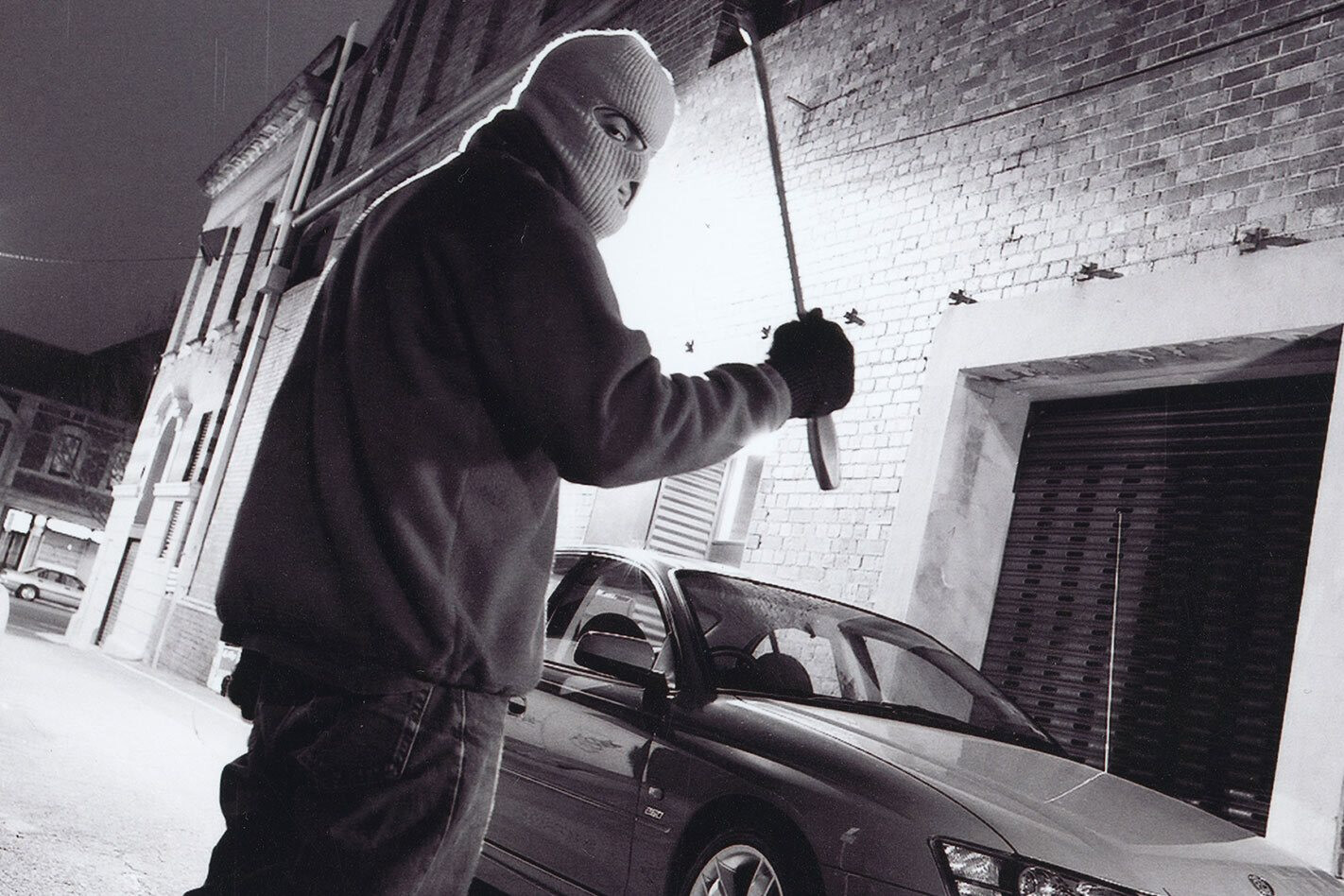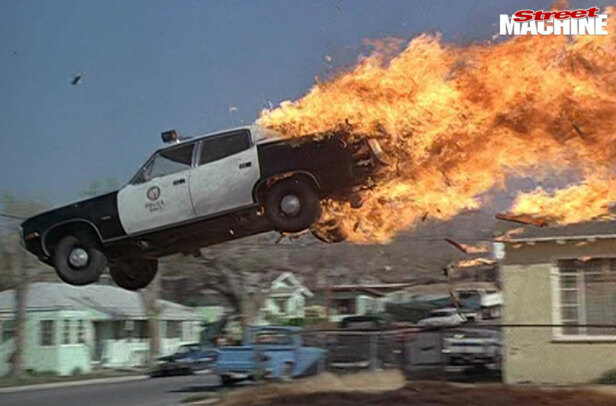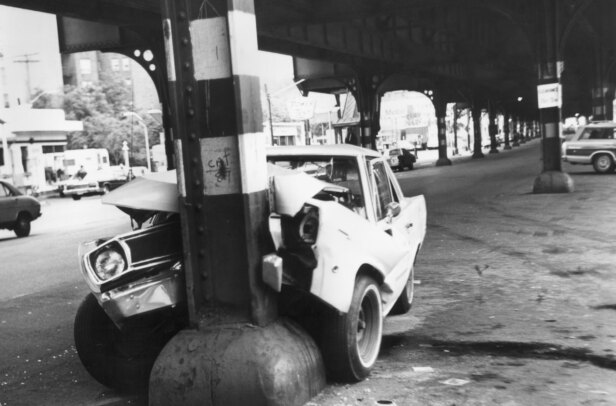If you’ve spent bulk cash on your classic street machine, it pays to take steps to stop it going ‘missing’
YOU only have to pick up a newspaper, have a conversation at the pub, turn on the TV news or log onto a social media site to get the impression that car thieves are lurking around every corner. If it isn’t gangs of baddies lifting cars to order to be resold in the Middle East, it’s the local midnight spares mobs or even those rascals who’ll break into your house, bash your goldfish and steal your car on the way out. But what’s the truth? Is it as bad as the media would have you believe? And, if it is a widespread social problem, what can you do to prevent it happening to you?
The truth is that car theft in Australia is on the decrease. Figures from a joint industry and government watchdog organisation, the National Motor Vehicle Theft Reduction Council (NMVTRC), show that the total number of car thefts has halved in the past five years. Which is nice, but that still means around 60,000 vehicles will be lifted in 2017. To put that into perspective, one in every 120 Aussie households will walk out to an empty driveway, carport or garage at some stage this year.
But one type of car that is still over-represented in the stats is older cars. The sort of cars we like. According to the NMVTRC’s executive director, Ray Carroll, older passenger vehicles (anything pre-July 2001, according to the NMVTRC) experience twice the rate of theft per thousand cars compared with the stats for all cars in Australia. Simple maths means that newer cars, of which there are more out there, are the most often stolen, and it also means that something like seven out of every 10 cars stolen in Australia today is taken with the ignition key. “That’s why we’re seeing home invasions these days,” Ray says. “New cars are now so secure, you can’t take them without the key.”
But that’s cold comfort for us, obviously. Put simply, there’s just not enough (if any) anti-theft technology in older cars to even slow the baddies down. If you’ve got a screwdriver and a coat-hanger, you’ve got all you need to relieve the legal owner of his or her property. That’s because Australian carmakers only really got serious about stopping car theft sometime back in the 1990s. The turning point is generally regarded as October 1992, when a facelift to the Ford Falcon EB included the locally developed Smartlock system. Using an electronic key with rolling codes, the system turned out to be about the best in the world at the time and forced the other locals to follow suit with similar systems aimed at eliminating hotwiring. How good was Smartlock? Well, the South Australia police let an experienced light-fingered crew loose on a Falcon to see how long it took them to get the thing started. The state’s finest car thieves finally went home after four days. On the bus, too, because they didn’t get that Falcon going.
Ray Carroll adds that even those early immobiliser systems had built-in defeat systems; newer immobilisers (which became mandatory in all new Aussie-delivered cars in 2001) don’t. Of course, any immobiliser is better than none, but prior to that, you were kind of on your own. In reality, pinching something like a pre-VR Holden Commodore is not really much more difficult that using the old nail-file trick to turn the ignition barrel in your mum’s EH while she was at bingo. Or was that just me?
But it’s not all bad news for old cars – as in, collectible and classic old cars. According to Chris Boribon of Shannons, which insures a big chunk of this country’s classic cars, bikes and trucks, theft of 1930s and 1940s (and older) vehicles is pretty much unheard of. That’s largely because there’s a smaller market for them and no real midnight spares market for the parts they could provide. And let’s face it, most kids looking for a joyride aren’t going to pick a car that’s flat-knacker at 90km/h, are they? Nor are they going to have the first idea of how to start, let alone drive, a Model T Ford.
But even if you’re driving something locally made from the 1960s, 70s or 80s, the theft stats probably shouldn’t leave you lying awake at night, staring at the ceiling. Ray Carroll reckons that thefts of really valuable classics like GTHOs and first-gen Monaros are almost unheard of. “It would be very rare for a GT Falcon to be stolen now,” he says. “We hear about it, but it’s almost never. If it’s a rare and valuable car, the thieves can’t get rid of it. Too many people would go: ‘Where the hell did that come from?’ and it would be game over.”
Chris Boribon of Shannons agrees: “When a rare [classic] car like that goes missing, they’re too hot a property to do anything with. In fact, those cars are very likely to be recovered; all of a sudden it’s all over the news, the heat’s suddenly on the thieves and the car gets abandoned somewhere.”
Less inherently valuable older cars aren’t always so lucky. Ray says the majority of those stolen have their bodies scrapped and their engines and transmissions thrown in a container and sent somewhere offshore where there’s a market for dodgy spares. Those cases are also the specialty of younger offenders who use the cars for a joyride or a free trip home, and account for up to half of all thefts of older vehicles.
Even though older cars might be twice as likely to be swiped as newer stuff, having them nicked is still way down the list of ways of losing your wheels. Actual figures from insurance companies are a closely guarded secret, but the NMVTRC spilled the beans to us. It seems that, of all insurance claims costs in Australia, only about five per cent of the dollar amounts are down to thefts. Even using the council’s own figure of older cars being over-represented in the stats, that still means only about 10 per cent of claims costs are theft-related. Which means you’re a whole lot more likely to have your car damaged in a garage fire, a hailstorm or a good old-fashioned stack than you are having it half-inched.
WHAT CAN YOU DO?
According to Ray Carroll of the NMVTRC, the single most effective thing you can do to stop your car becoming a statistic is to fit an immobiliser. These are simple gadgets that disable the ignition, fuel or starter motor, or all three. “An aftermarket immobiliser is far and away the most effective method of reducing theft of older cars,” he says. “They cost between $200 and $250, and we recommend them above and beyond anything else you can fit or do.”
But, perhaps surprisingly, the next-best protection is a whole lot less high-tech. “Don’t disregard the good old-fashioned steering lock,” Ray told us. But there’s a catch: “Don’t bother unless you’re going to actually fit the lock. In nine out of 10 thefts we’ve looked into, the steering lock has been sitting on the back seat.”
This GPS tracking device from Pro-Tekt is quick and easy to install, and being roughly the size of a credit card, it’s also easy to conceal. It sells for $195 plus a monthly subscription fee of $12.95, allowing you to locate your car in an instant via a mobile phone app. Pretty handy should the unthinkable ever happen
Electronic trackers are another form of high-tech protection and, while they won’t stop the car going missing in the first place, they do mean that when the alarm is raised, the stolen car can be tracked in real time. The cost of tracking technology has come down a lot in recent years. For example, Aussie GPS tracking company Pro-Tekt offers devices retailing from $195, plus subscriptions starting at $12.95 per month. The devices feature a simple four-wire hook-up, and allow you to pinpoint the location of your vehicle via an app on your phone at any time. It also provides you with the route history of your vehicle, and allows you to receive notifications when your vehicle leaves a pre-determined ‘Geo-Limit’. There’s a power cut-off alarm if the battery has been disconnected, but the device has an internal back-up battery so it will continue to upload and store new location information to secure servers, and can be accessed in real time 24/7. You can also remotely activate a 115dB siren for audible location.
You can also be proactive for no money. Park off the street. Be careful where you park your car in public places. If it’s after dark, park under a light. Be aware of cars following you home each night and don’t leave your ignition key somewhere obvious like the top of the microwave or a row of hooks with ‘KEYS’ written on it.
At home, you can install CCTV systems, and many experts reckon a lockable bollard or some other type of physical barrier is good practice. Not all bollards are created equal – you can buy them online for as little as $150, but they’ll only be as good as the padlock you use to secure them. Beefier, professionally installed bollards with locking sleeves cost significantly more, but it’s still cheap insurance.
Speaking of which, don’t forget that insurance policies can differ greatly, so read the fine print. Also, as the value of your car rises each year (not an uncommon thing these days) you need to talk with your insurer and agree on a value that you’re both happy with.
And if the unthinkable does happen and your car goes missing, Chris Boribon from Shannons reckons the best thing you can do is to alert anybody who might care. “Hit the clubs and social media and get it out there. It’s a very effective approach.”




Comments